Beyond the moon landing:
Inspiration and accomplishment
story by Emily Wilmsen
published July 18, 2019
They faced significant odds, working with rudimentary technology. They inspired us to believe we could accomplish anything. They made us proud to be Americans.
Millions watched in awe as Apollo 11 made its historic landing on the moon 50 years ago. The audience included a small group of men and women with ties to Colorado State University who would follow them – into space or underwater sea laboratories or as leads on some of the very few university-led Earth Science missions.
In 1984, Tom Vonder Haar – now University Distinguished Professor Emeritus in the Department of Atmospheric Science and a member of the National Academy of Engineering – was at Cape Kennedy watching Sally Ride’s historic second flight on the Challenger shuttle. Also on the flight was the Earth Radiation Budget Satellite that Vonder Haar and his team had designed with NASA.
“Summer 1969 and the moon landing was inspiring to many young scientists, engineers and students,” Vonder Haar said. “I am still impressed today with the challenge it presented and our relatively crude technology at the time. Later in my career, I worked on an Earth satellite research project with Neil Armstrong and observed his quiet capability and spirit of teamwork.”
Vonder Haar’s satellite was the first of two Earth Science missions led by CSU. In 2006, NASA would send a second satellite into space – CloudSat – designed by Graeme Stephens, also a University Distinguished Professor Emeritus and National Academy of Engineering member.
Campus astronauts
An impressive list of astronauts have called CSU home, either as students or faculty or both. The late Walter Schirra, one of the original seven U.S. astronauts, was a faculty advisor for the College of Engineering from 1977 to 1982. He was the only person to fly in all of America’s first three space programs (Mercury, Gemini and Apollo).
More recently, Kjell Lindgren (M.S., ’96 in cardiovascular physiology) was the first Taiwanese American in space as an International Space Station flight engineer and aerospace medicine specialist.
SOURCE talked with other CSU astronauts about what the moon landing meant to them.
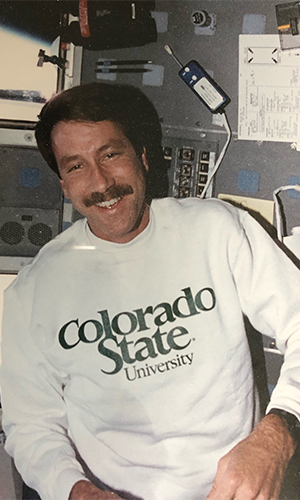
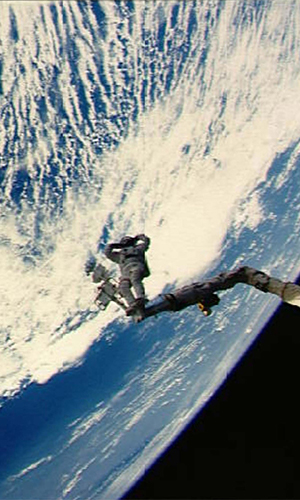
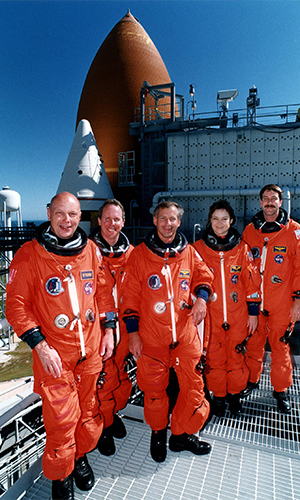
Kent Rominger (left) on a mission; James van Hoften kicking back on a space walk (center); Rominger with fellow astronauts (right).
Mary Cleave (’69, B.S. in biological science)
One of the first women to complete NASA flight training and serve as flight engineer for two Atlantis space shuttle missions.
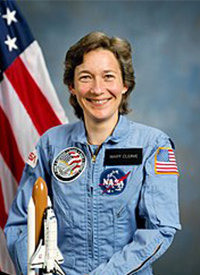
“I had just graduated with my B.S. in biological science from CSU and was working at a summer camp on Lake Champlain in upstate New York, getting ready to head out on my first ‘real job’ as a resident assistant on World Campus Afloat that fall. It was a great job because I would be working on a ship, getting paid to travel around our planet. So, although my boyfriend got drafted (seemed like all the males were in those days of the Vietnam war), I was in a great mood to celebrate. The TV was on in the rec room and we were all crowded around watching and celebrating the event. It never occurred to me that I would be part of the astronaut corps. They were all male test pilots. But it did make me feel real pride in being an American.”
Martin Fettman (’82, Ph.D, in physiology, professor emeritus of clinical sciences)
First veterinarian in space. He held a faculty appointment in the College of Veterinary Medicine and Biomedical Sciences from 1982 to 2006. He was the prime payload space specialist for Space Lab Life Sciences-2 in 1992 and flew on the Space Shuttle Columbia in 1993.
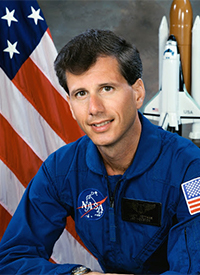
“It’s pretty easy to say that the moon landing, like everything else NASA accomplished back in the day, inspired me to want be a part of it all! I had the pleasure of getting to know John Young (who landed on the moon in 1972) fairly well while I was at NASA. Let’s just say he was a character, but he went out of his way to make me feel welcome.”
Kent Rominger (’78, B.S. in civil engineering)
Logged more than 1,600 hours in space and traveled 27 million miles on five shuttle flights, three as pilot and two as crew commander.
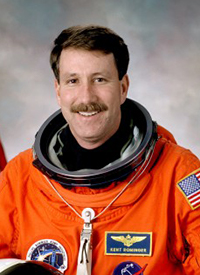
“The moon landing was one of the greatest feats in the history of the world and nothing makes me more proud to be an American than when Neil Armstrong set foot on the moon. As a 12-year-old child, the moon landing instilled a belief in me that human beings, including me, could do anything that we set our minds to.”
Tara Ruttley, (’98, B.S. in biological science, ’00, M.S. in mechanical engineering)
An aquanaut on Aquarius, the world’s only undersea research laboratory, and associate program scientist for the International Space Station at NASA’s Johnson Space Center.
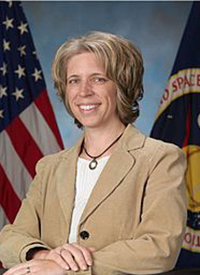
“The moon landing, to me, is an example of what humans can do in the name of exploration and even competition. In 1969, with way less computing capabilities than what’s in our smartphones today, NASA engineers had the audacity to turn science fiction-like dreams into something extraordinarily real. I still see this audacity daily as an employee at NASA. The ideas and the creativity to make big things happen here every day is always incredible to me, even after 18 years. I’m very proud to be a part of this special family and especially excited to celebrate the achievement of the first moon landing.”
Ron Sega
Chief technology officer for the U.S. Army Futures Command, who is on a leave of absence as the CSU Woodward Professor of Systems Engineering. Sega flew on the space shuttle Discovery in 1994 and as payload commander for the third shuttle/Mir docking mission aboard Atlantis in 1996.
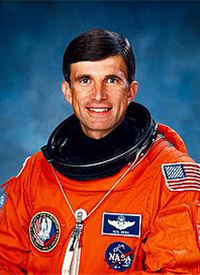
“As a high school student, a few obvious, though significant observations for me, were:
– People have left the earth for the first time to explore another place.
– Looking at the moon would be different from that point forward, since we have been there.
– Great achievements take a lot of work, by many people, for a long time.”
James van Hoften, (’68, M.S.,’76, Ph.D. in civil engineering)
Served as a mission specialist on two shuttle missions, Challenger in 1984 and Discovery in 1985.
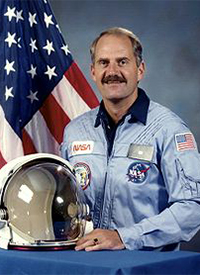
“I joined the Navy two months before the moon landing. I was accepted for pilot training for both the Air Force and Navy but decided to go with the best pilots. In any case, during my interviews I mentioned that I might like to become an astronaut but was told that at 6 feet 4 inches, I was way too tall for the program (I’m still the tallest). I still watched with awe as they pulled off their great adventure. Loved the technology and the brave attitudes and thought I’d still like to do that. Eight years later the shuttle program was recruiting and they had increased the height limit to 6ft.-4in. Luckily, I made the cut and had a wonderful career at NASA, flying on two great missions, and made four spacewalks. During our training, we were briefed each week by the crews from all the previous flights. A highlight, of course, was when we came to Apollo 11. It was truly an honor to work with all the old and new astronauts and I treasure the experience.”